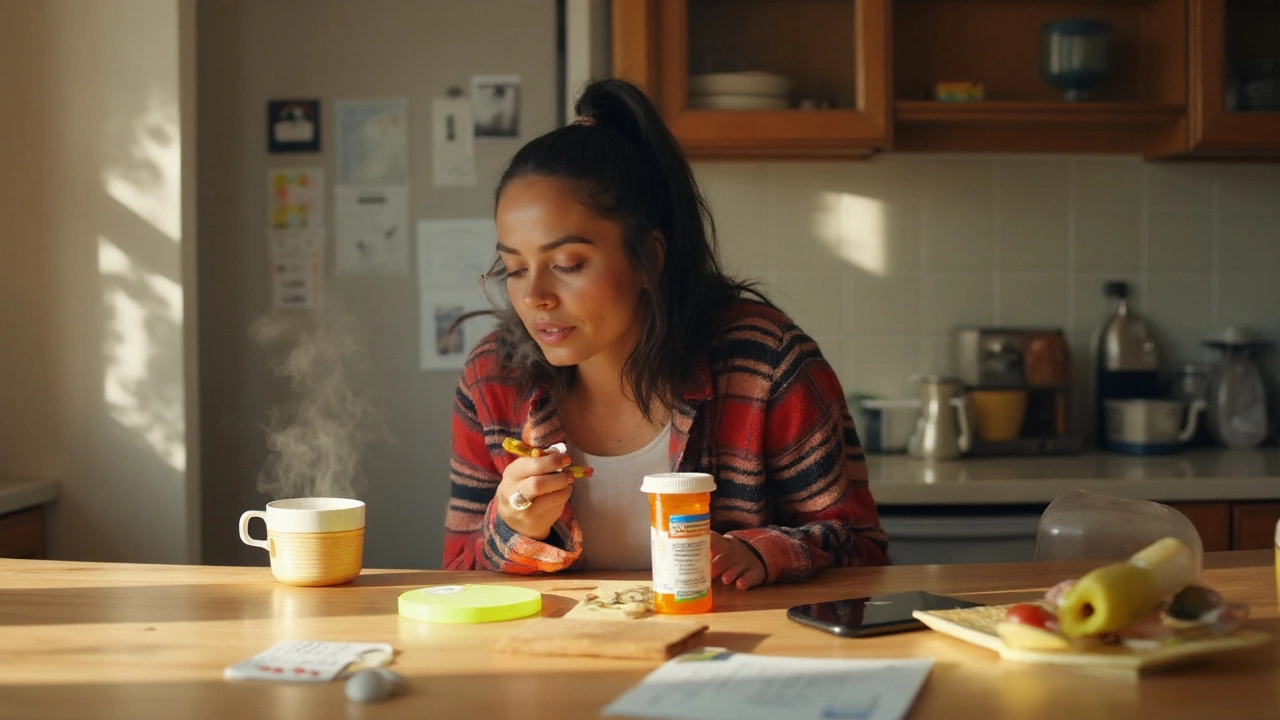Pharmacy Dictionary: Easy Answers to Everyday Medicine Questions
Ever opened a pill bottle and wondered what the abbreviations mean? You’re not alone. Most of us see cryptic words on prescriptions and feel lost. This guide breaks down the most common pharmacy terms, gives handy storage tips, and shows why your thoughts can change how a drug works.
Common Words You’ll See on a Prescription
Rx: The symbol doctors use to write a prescription. It just means “take this medicine.”
OTC: Over‑the‑counter. These are drugs you can buy without a prescription, like ibuprofen or cough syrup.
PRN: Latin for “as needed.” If a pill is marked PRN, you only take it when you feel the symptom, not on a set schedule.
Bid, Tid, Qid: Short for “twice a day,” “three times a day,” and “four times a day.” They tell you how often to take the medicine.
SX: Stands for side effects. Knowing the common SX can help you decide if a drug is right for you.
How to Store Your Medicine Right
Keeping drugs at the right temperature matters. Most pills stay safe at room temperature, but a few need the fridge. If the label says “store below 25°C” or “refrigerate,” follow it. Putting a medication in the freezer or a hot car can ruin it.
Here’s a quick checklist:
- Keep bottles tightly closed.
- Avoid the bathroom cabinet; moisture and heat are bad.
- Use the original container whenever possible – it’s designed to protect the drug.
- Check expiration dates every few months.
If you’re not sure whether a drug needs cooling, ask the pharmacist. They love those questions and can give you a short answer on the spot.
Talking to Your Pharmacist
Pharmacists are a gold mine of info. A simple “Can I take this with my blood pressure meds?” can prevent a nasty interaction. Build a quick rapport: smile, use their name, and let them know any allergies or other meds you’re using.
When you pick up a new prescription, ask these three things:
- What’s the best time of day to take it?
- Are there foods or drinks I should avoid?
- What should I do if I miss a dose?
Answers are usually short and clear, and you’ll feel more confident about your treatment.
The Mind‑Body Link: Placebo and Nocebo
Ever noticed a sugar pill making you feel better? That’s the placebo effect – your belief helps the drug work. The flip side, nocebo, is when negative expectations cause side effects, even if the pill is harmless.
Knowing this helps you stay realistic. If a doctor says a medication might cause mild nausea, expect it, but don’t obsess. Too much worry can turn a tiny feeling into a full‑blown problem.
In short, your mindset matters. Trust the information, ask questions, and keep a balanced view.
Quick Takeaways
• Decode abbreviations like Rx, OTC, PRN, bid, tid, qid, and SX.
• Store most meds in a cool, dry place; refrigerate only when labeled.
• Use your pharmacist as a go‑to resource for interactions and timing.
• Remember the placebo/nocebo effect – belief can boost or hinder results.
With these basics, you’ll feel less confused and more in control of your health. Keep this guide handy the next time you pick up a prescription, and you’ll navigate the pharmacy world with confidence.
